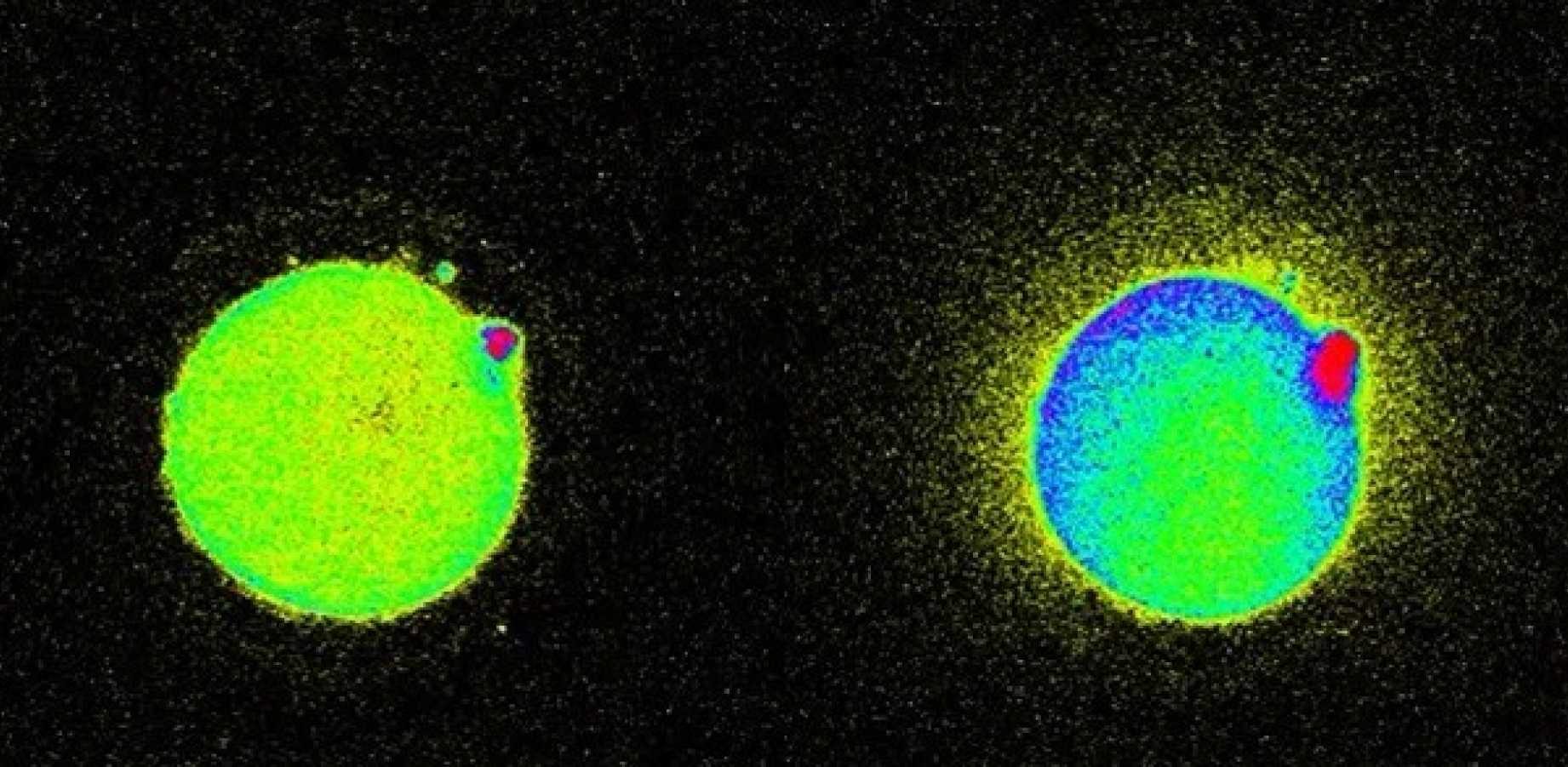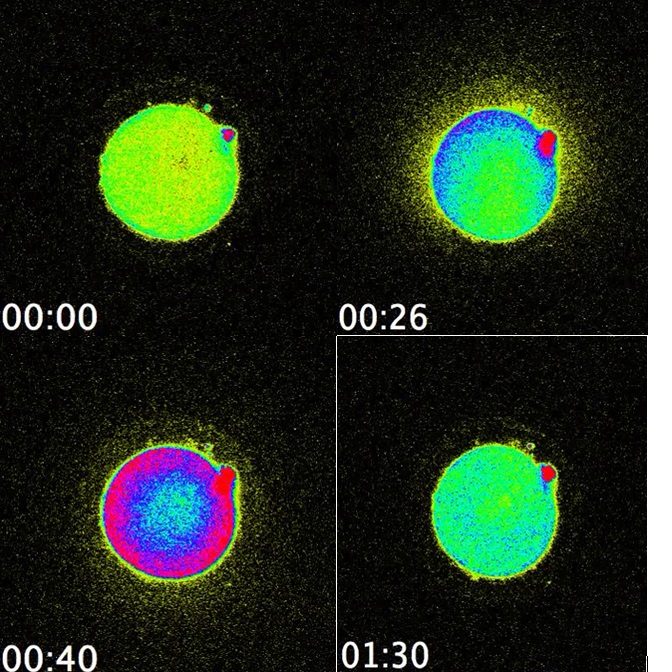
© Northwestern University
Scientists have discovered that a "breathtaking" flash of light occurs at the moment of conception.
For the first time, researchers from Northwestern University have now
demonstrated that when a human sperm first meets an egg a bright zinc spark can be seen, not only a "remarkable" phenomenon but also one that might be a game-changer for in vitro fertilization.
"It was remarkable,"
said the study's co-author Professor Teresa Woodruff. "We discovered the zinc spark just five years ago in the mouse, and to see the zinc radiate out in a burst from each human egg was breathtaking. All of biology starts at the time of fertilization, yet we know next to nothing about the events that occur in the human."
The researchers say that the size of the flash of light provides valuable information about the health of the eggs. The brighter the flash, the more viable the egg, and thus the better option for in vitro fertilization, which has a high failure rate (around 50%) and often involves clinicians using imprecise means of testing or simply choosing whichever eggs they think appear to be most viable.
"This means if you can look at the zinc spark at the time of fertilization, you will know immediately which eggs are the good ones to transfer in in vitro fertilization," explained Woodruff. "It's a way of sorting egg quality in a way we've never been able to assess before."
"This is an important discovery because it may give us a non-invasive and easily visible way to assess the health of an egg and eventually an embryo before implantation,"
said co-author Dr Eve Feinberg. "There are no tools currently available that tell us if it's a good quality egg. Often we don't know whether the egg or embryo is truly viable until we see if a pregnancy ensues. That's the reason this is so transformative. If we have the ability up front to see what is a good egg and what's not, it will help us know which embryo to transfer, avoid a lot of heartache and achieve pregnancy much more quickly."
Below is a frame-by-frame showing the flash of light when the sperm first enters the egg:

© Northwestern University
Read Northwestern's full report on the study
here.
Ahhhh !! Drop the egg-count. This is wayyyy deeper n hot!